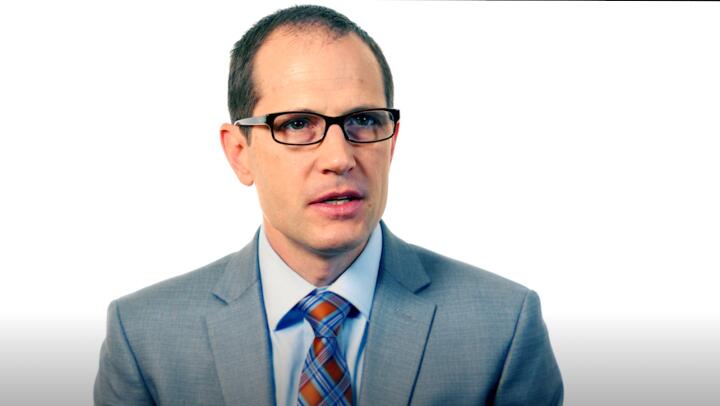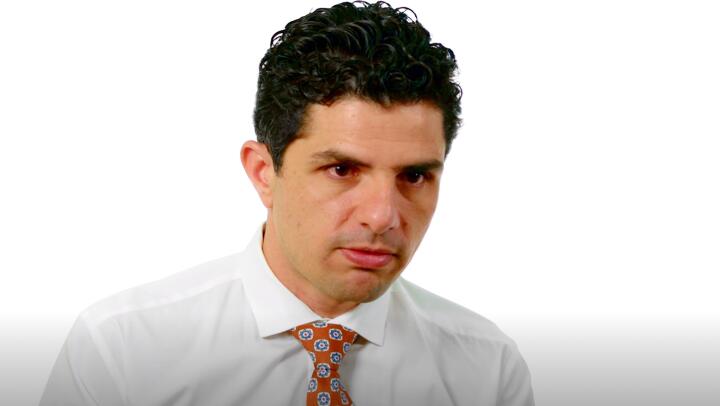What is an abdominal aortic aneurysm?
An abdominal aortic aneurysm is a weakened and bulging area in the lower part of the aorta, the major blood vessel that supplies blood to the body. The aorta runs from your heart through the center of your chest and abdomen.
Most commonly, people with abdominal aortic aneurysms are Caucasian, male, and older than 60, and have high blood pressure, atherosclerosis, or a family history of aortic aneurysm. A history of cigarette smoking is also a strong risk factor for the development of abdominal aortic aneurysm.
The signs and symptoms of an abdominal aortic aneurysm may not be evident, and the course of disease varies among individuals. Some people with an abdominal aortic aneurysm have no symptoms at all. Others may have a pulsating feeling near the navel or may experience abdominal, chest or back pain. Fortunately, abdominal aortic aneurysms can be treated successfully with a range of options, such as lifestyle changes, high blood pressure management, or surgical repair.
Left untreated, an abdominal aortic aneurysm may lead to rupture of the aneurysm, which causes life-threatening bleeding. Seek immediate medical care (call 911) if you, or someone you are with, have symptoms of a ruptured abdominal aneurysm, such as severe abdominal, pelvic, or lower back pain, rapid heart rate, cold skin, or loss of consciousness. Seek prompt medical care if you develop symptoms such as a pulsating feeling near the navel, tenderness or pain in the abdomen or chest, or back pain.
What are the symptoms of an abdominal aortic aneurysm?
Abdominal aortic aneurysms develop slowly over many years. Many people have no symptoms, while others may experience a number of symptoms, which vary in intensity depending on the rate of growth and size of the aneurysm.
Common symptoms of abdominal aortic aneurysm
The most common symptoms of an abdominal aortic aneurysm include:
- Abdominal tenderness or pain
- Back pain
- Chest tenderness or pain
- Pulsating sensation in the abdomen
Serious symptoms that might indicate a life-threatening condition
In some cases, abdominal aortic aneurysms can be life threatening. Seek immediate medical care (call 911) if you, or someone you are with, have any of these life-threatening symptoms including:
- Abdominal or pelvic pain that is severe, sudden, persistent or constant
- Bluish lips and fingernails (cyanosis)
- Cold skin
- Confusion or loss of consciousness for even a brief moment
- Nausea and vomiting
- Rapid breathing (tachypnea) or shortness of breath
- Rapid heart rate (tachycardia)
What causes an abdominal aortic aneurysm?
An aortic aneurysm develops in the part of the aorta that is located within the abdomen. The disease can occur if the wall of the aorta becomes weakened by an accumulation of fatty deposits called plaque.
Aneurysms may also be due to inherited diseases, such as Marfan’s syndrome, that affect the connective tissue of the body, including the walls of the aorta. In addition, tobacco use, high blood pressure, and infection of the aorta all play a role in the development of aneurysm in the abdominal aorta.
What are the risk factors for abdominal aortic aneurysm?
A number of factors increase the risk of developing an abdominal aortic aneurysm. Not all people with risk factors will get an abdominal aortic aneurysm. Risk factors for abdominal aortic aneurysm include:
- Advanced age
- Atherosclerosis (buildup of plaque on the walls of the coronary arteries; atherosclerosis is a type of arteriosclerosis)
- Caucasian race
- Family history
- Genetic diseases of connective tissue such as Marfan’s syndrome
- High blood pressure (hypertension)
- High cholesterol
- Male gender
- Smoking and other tobacco use
Reducing your risk of abdominal aortic aneurysm
You may be able to lower your risk of abdominal aortic aneurysm by:
- Getting regular physical activity
- Maintaining normal blood pressure
- Quitting smoking and other tobacco use
- Reducing the amount of cholesterol and fat in your diet
How is an abdominal aortic aneurysm treated?
Treatment of an abdominal aortic aneurysm begins with seeking medical care from your health care provider. To determine if you have an abdominal aortic aneurysm, your health care provider will ask you to undergo specialized testing.
Options for treatment are influenced by the location of the aneurysm, the size of the aneurysm, and whether the aneurysm has leaked or not, as well as the age, treatment preferences, and other health problems of the patient. Today there are many novel treatment options available for abdominal aortic aneurysm patients who were deemed ‘poor surgical candidates’ in years past. Treatments include:
- Blood pressure management
- Control of risk factors
- Implantation of endovascular stent-graft device
- Observation
- Surgical repair of the aneurysm
What are the potential complications of abdominal aortic aneurysm?
The complications of an abdominal aortic aneurysm, including blood clots, rupture of the aneurysm, and severe bleeding, can be serious and even fatal. You can minimize your risk of serious complications by following the treatment plan you and your health care professional design specifically for you.
Complications of an abdominal aortic aneurysm include:
- Blood clots
- Hypovolemic shock (a state of low blood pressure caused by bleeding or other fluid loss)
- Organ failure
- Rupture of the aneurysm
- Severe internal bleeding
- Stroke




















